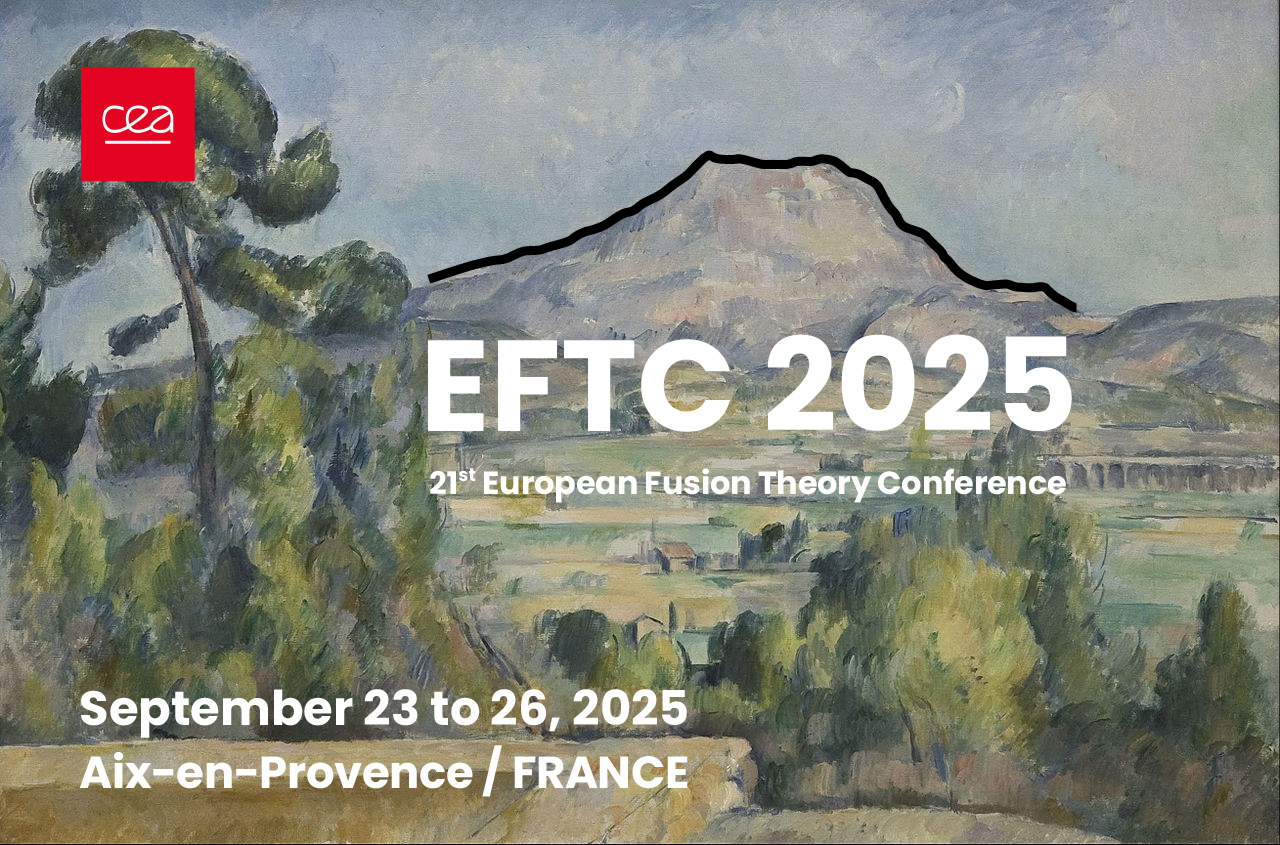Speaker
Description
New plasma current ramp up (RU) scenario has been developed recently on TCV to demonstrate for the first time the possibility to raise the plasma current (Ipl) non-inductively (i.e. with zero flux contribution from the central solenoid) by applying ECCD in the early discharge phase after the break down [1]. Similar strategy has been tested previously in the non-inductive (NI) RU scenario fully based on the bootstrap (BS) current drive mechanism (i.e. with 100% of the bootstrap current fraction) [2]. In the recent scenario a reversed q-profile forms rapidly at the start of the NI current RU and the configuration with negative magnetic shear (sm) is maintained till the end of the Ipl flat-top (FT) phase. The NI current RU operational domain has been explored by changing the plasma density, ECCD power and power deposition, demonstrating the possibility to control the FT plasma current and q-profile. A valuable database for the study of thermal electron transport in reversed shear (RS) configurations has been built.
The transport modelling of plasma evolution in these discharges starting with the early inductive phase and up to the end of the discharge is presented in this work with a purpose to establish the impacts of sm and q-profile on thermal electron transport. This is done by using the Bohm-gyroBohm (BgB) model [3] complemented with the sm-dependent function validated in the advanced scenarios with flat and reversed q-profile performed on JET, DIII-D and TFTR [4]. The interplay between the destabilising effect of q, the stabilising effect of the low/negative sm and the MHD-triggered losses strongly affecting the thermal confinement is analysed. Based on the validated transport models the possibility to optimise the NI current ramp rate in future experiments to avoid a strong MHD activity (double tearing mode) and unreasonably over-driven Ohmic current is investigated. Finally, the capability of the BgB model to reproduce accurately the electron temperature evolution in the on-axis NBI and ICRH heated (JET [5]) and off-axis ECCD RU scenarios is discussed.
The current RU experiments analysed here as well as the validated models reproducing the plasma behaviour in the NI scenarios provide a basis for the development of future fusion reactor designs relying on the NI operation (such as [6, 7]). These experiments and the analysis performed emphasise a strong need in the development of the theory-based integrated modelling tools combining the MHD stability and transport physics – two key phenomena regulating the plasma performance in RS configurations.
[1] S. Coda et al, 30th IAEA FEC, 2025; [2] S. Coda et al, 22nd IAEA FEC, 2008; [3] M. Erba et al, PPCF 39 (1997) 261; [4] I. Voitsekhovitch et al, Phys. Plasmas 6 (1999) 4229; [5] I. Voitsekhovitch et al, PPCF 52 (2010) 105011; [6] B. N. Sorbom et al, FED 100 (2015) 378; [7] K. Kim et al Nucl. Fusion 55 (2015) 053027
See author list of B.P. Duval et al 2024 Nucl. Fusion 64 112023
*See author list of E. Joffrin et al 2024 Nucl. Fusion 64 112019

